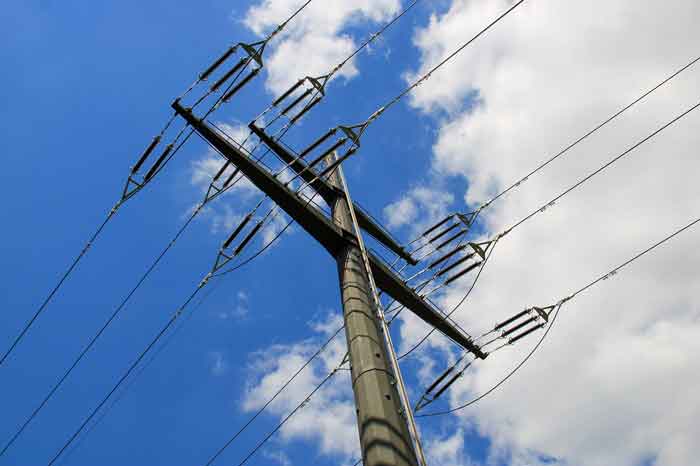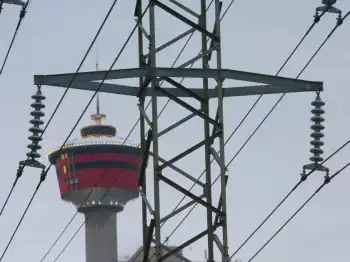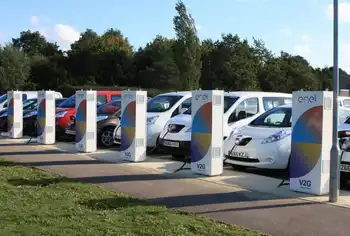Small firm has big ideas on green energy
But looks can be deceiving. Established around 100 years ago, the tidy eight-acre horse farm, just a few minutes from downtown Ottawa, is going green-with a bit of help from a small but mighty bullfrog.
Entirely powered by green electricity from the conservancy award-winning alternative energy provider Bullfrog Power, Altoba is one of almost 7,000 homes and more than 700 businesses across Ontario and Alberta now leaving a smaller, amphibian-shaped carbon footprint.
They're doing it by setting a new standard in Canada: the company only uses electricity from sources that meet or exceed the federal government's Environmental Choice Program EcoLogo standard for renewable energy. In Alberta, where the three-year-old Toronto company launched last year, that means 100-per-cent wind power; in Ontario, green electricity comes from wind and low impact hydro that doesn't harm the ecosystem.
For resident professionals-cum-farmers Dan Demers and Jo McCutcheon — he's the Canadian Cancer Society's Public Issues Office director, she's the eastern Canada Research and Operations director for Canadian Development Consultants — International-Bullfrog has helped them leap into their dream of organic farming.
"It is part of our overall vision for the farm," says McCutcheon, who also composts, uses energy efficient light bulbs and drives a hybrid vehicle. "We're trying to get the farm as green as possible."
Although they plan to eventually install windmills and solar power to get off the grid, the first step was to sign up with Bullfrog because of its guarantee of 100 per cent clean energy.
Even so, going green costs. Although western customers can expect a $12 monthly increase to their bill, says Bullfrog's western region vice president Theresa Howland, McCutcheon has seen her costs jump by $30 to $40 per month, because average increases are a dollar a day in Ontario.
"It's an old house, so it's not very energy efficient. We have a lot of work to do, and we have to replace some appliances as well," she admits. "We know we're paying more. We have a hybrid vehicle and we paid more for it, but it was a conscious decision. We know there are consequences. But they're insignificant against the consequences of doing nothing about the environment."
It's that determinedly green consumer outlook that Bullfrog president Tom Heintzman hopes will continue to expand his company. Established in 2005, it has grown from a few employees to more than 30 in two provinces, with more to come.
"We're trying to make a real statement about the importance of renewable energy in the future," says Heintzman, who describes his customers as either early adopters of innovation or those looking to easily reduce their carbon footprint.
"I mean, our name is a good way to characterize it. Bullfrogs are green, which sets us apart from other energy players. Frogs are amphibians and are an indicator species, so they are the first to feel the impact of climate change. And bullfrogs are small, but with a big voice. That is how we think of ourselves and how our customers think of themselves, too."
Certainly, it's a bill that fits western consumers who've embraced the company's green ethos. In just one year, 1000 Albertan homes and businesses, including Wal-Mart, BMO Financial, RBC, lululemon athletica, Chocolaterie Bernard Callebaut and TD Bank Financial Group, have all signed on.
It's a situation that doesn't surprise Howland, who says western customers are looking for an alternative to Alberta's "dirty" energy, 60 per cent of which comes from coal and 30 per cent from natural gas. "Really, we had a couple of reasons for choosing Alberta next over other provinces. There is a pioneering spirit here and a lot of innovation, so Albertans are open to new ideas."
And while the company one day hopes to go national, expansion will depend largely on individual provinces' energy mix, regulations and customer perspectives. "It will take some time and require receptivity from all the provinces to make it viable," Heintzman observes.
In the meantime, Bullfrog's next hop will be British Columbia. Although BC Hydro currently uses clean wind turbines, the company hopes to replace any coal electricity imported from Alberta.
"We're an optimistic young company and the means already exist to solve the environmental issues we confront," he says. "It's time we all move forward in as efficient and effective manner as possible. That will require using every tool, from government regulations and global actions down to the most personal decisions people make in their own homes."
Related News

Strong Winds Knock Out Power Across Miami Valley
MIAMI - On a recent day, powerful winds tore through the Miami Valley, causing significant disruption across the region. The storm, which was accompanied by gusts reaching dangerous speeds, led to widespread power outages affecting thousands of homes and businesses. As trees fell and power lines were snapped, many residents found themselves without electricity for hours, and in some cases, even days.
The high winds, which were part of a larger weather system moving through the area, left a trail of destruction in their wake. In addition to power outages, there were reports of damage to buildings, vehicles, and other…





